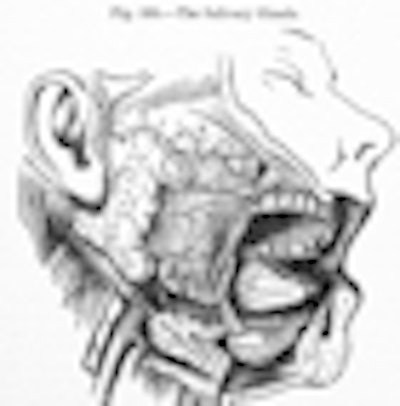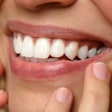
Researchers at the Columbia University College of Dental Medicine have identified a genetic variation that raises the risk of developing osteonecrosis of the jaw (ONJ) in patients who take bisphosphonates (Oncologist, January 20, 2012).
The discovery paves the way for a genetic screening test to determine who can safely take these drugs, according to the researchers.
Oral bisphosphonates are currently taken by some 3 million women in the U.S. for preventing or treating osteoporosis. In addition, intravenous bisphosphonates are given to thousands of cancer patients each year to control the spread of bone cancer and prevent excess calcium from accumulating in the blood.
— Athanasios Zavras, DMD, DMSc,
Columbia University College of
Dental Medicine
"These drugs have been widely used for years and are generally considered safe and effective," stated lead study author Athanasios Zavras, DMD, DMSc, an associate professor of dentistry and epidemiology at the Columbia University College of Dental Medicine, in a press release. "But the popular literature and blogs are filled with stories of patients on prolonged bisphosphonate therapy who were trying to control osteoporosis or hypercalcemia only to develop ONJ."
ONJ often leads to painful and hard-to-treat bone lesions, which can eventually lead to loss of the entire jaw, according to the researchers. Among people taking bisphosphonates, ONJ tends to occur in those with dental disease or those who undergo invasive dental procedures.
There are no reliable figures on the incidence of ONJ in patients taking oral bisphosphonates. Estimates range from 1 in 1,000 to 1 in 100,000 patients for each year of exposure to the medication, according to the American College of Rheumatology. ONJ is more common among cancer patients taking the intravenous form of the drug, affecting about 5% to 10% of these individuals, Dr. Zavras noted.
Genetic factors
Studies have suggested that genetic factors play a major role in predisposing patients to ONJ. Delving deeper into this question, Dr. Zavras and his colleagues performed genome-wide analyses of 30 patients who were taking bisphosphonates and had developed ONJ, and compared them with several bisphosphonate users who were disease-free.
The researchers found that patients who had a small variation in the RBMS3 gene were 5.8 times more likely to develop ONJ than those without the variation. The study also identified small variations in two other genes, IGFBP7 and ABCC4, that may contribute to ONJ risk.
"Our ultimate goal is to develop a pharmacogenetic test that personalizes risk assessment for ONJ, a test that you could give to people before they start to use bisphosphonates," Dr. Zavras said. "Those who are positive for this genetic variation would select some other treatment, while those who are negative could take these medications with little fear of developing ONJ."
At present, many women discontinue or avoid treatment for serious osteoporosis because they are afraid of losing their jawbones, he added. "There even are reports of dentists who have refused to perform certain invasive procedures in patients taking bisphosphonates. So there is a great need for a pharmacogenetic screening test to determine which patients are really at risk for ONJ."
The current study looked only at Caucasians. Further studies are needed to determine whether the RBMS3 gene variation is seen in other racial groups, according to the researchers.
Columbia University has filed a patent application with the U.S. Patent and Trademark Office relating to a genetic screening test for predisposition to ONJ. In addition, through its technology transfer office, the university is actively seeking partners to collaborate, license, and commercialize the technology.



















